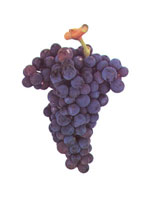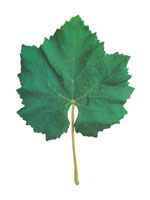 |
 |
 |
 |
 |
| For more information follow these links. |
|
 |
 |
 |
 |
|
 |
|
 |
Castelão


| |
Grape characteristics |
| Name |
Castelão |
| Type of grape variety |
Red |
| Description |
Castelão is one of the grape varieties most cultivated in the south of Portugal, particularly in the area of the Península de Setúbal. It has had many names throughout times: João de Santarém, Castelão Francês and the popularly spread Periquita.
Castelão develops best in hot climates and sandy and dry soils. When planted in moist and fertile soils, it produces low quality wines.
Wines produced by this grape variety are concentrated, aromatic (raspberry and gooseberry) and have good ageing potential. The Peninsula de Setúbal region produces the best wines from this grape variety. |
| |
|
| |
Ampelographic Characteristics
Fonte: Catálogo das Castas, IVV.
|
| Young Branch End |
open flat; whitish green, slightly carmine borders; cottony. |
| Young leaf |
whitish and slightly carmine L1, L2 and L3, yellow L4 with brown spots, green brownish L5, green L6. Cottony L4 with webbed main nervures. |
| Flower |
androgynous. |
| Shoots |
green internodes and nodes; low anthocyanin pigmentation on the shoots; erect to semi erect growth. |
| Tendrils |
intermittent regular distribution, 02 formula, medium length. |
| Adult leaf |
medium length, pentagonal, with five lobes. Open, upper lateral sinuses with U-shaped bases; petiolar sinus with a U-shaped base. Dark green leaf blade, low swelling, null anthocyanin pigmentation on the main nervures. Cottony underside, webbed main nervures. Convex to rectilinear short teeth, their width approximately equalling their length. Petiole shorter than the average main vein and glabrous. |
| Bunch |
medium length. Peduncle of medium length with low lignification. |
| Berry |
medium, round, dark blue, strongly bloom. Thick skin. Colourless, more or less soft pulp with a simple flavour. Short pedicel, sufficiently adherent. |
| Seeds |
strong hard tegument. |
| Stalks |
circular section, striated surface. Reddish brown in colour, glabrous. |
|